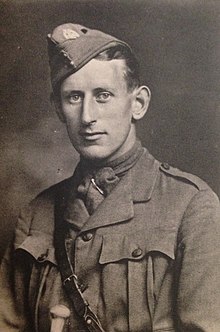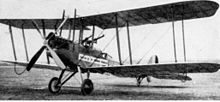William Middleton Wallace
 | |||||||||||||||||||||||||||||
| Date of birth | 23 September 1892 | ||||||||||||||||||||||||||||
|---|---|---|---|---|---|---|---|---|---|---|---|---|---|---|---|---|---|---|---|---|---|---|---|---|---|---|---|---|---|
| Place of birth | Edinburgh, Scotland | ||||||||||||||||||||||||||||
| Date of death | 22 August 1915 (aged 22) | ||||||||||||||||||||||||||||
| Place of death | near Lille, France | ||||||||||||||||||||||||||||
| School | Edinburgh Academy | ||||||||||||||||||||||||||||
| University | King's College, Cambridge | ||||||||||||||||||||||||||||
| Rugby union career | |||||||||||||||||||||||||||||
| |||||||||||||||||||||||||||||
| ---- | |||||||||||||||||||||||||||||
| Military career | |||||||||||||||||||||||||||||
| Buried | Cabaret-Rouge British Cemetery (XII. D. 11) 50°22′51″N 2°44′30″E / 50.380885°N 2.741614°E | ||||||||||||||||||||||||||||
| Allegiance | First World War †
| ||||||||||||||||||||||||||||
William "Willie" Middleton Wallace (23 September 1892 – 22 August 1915) was a
in 1913–14.Having grown up in
He was
Early life
Wallace was born in Edinburgh, the son of Robert and Mary Wallace, on 23 September 1892.[1] He went to school at Edinburgh Academy from 1899 to 1912 then studied at King's College, Cambridge until 15 July 1914. At school, he was in the rugby team for his final three years and vice-captain in the final year. He also played cricket, captaining the school team in 1911, as wicket-keeper.[2]
Rugby career
According to the rugby journalist and author
He was selected to play for Scotland against England in 1913; and Wales, Ireland, and England in 1914.[3]
Scotland's first Five Nations Championship match of 1914 was on 7 February, played away to Wales at Cardiff. Scotland had not won in Cardiff since 1890 and Wales were favourites, having 'lost so unluckily'[4] against England. The match pitted Welsh forward strength against the swift threequarter line of the Scots. The first points came from a try for Scotland by W. A. Stewart, converted by Hamilton, giving the visitors a five-point lead after four minutes. These were the only points they scored. Wales then attacked repeatedly and Wallace was kept busy in defence. With a 7–5 lead at half time, the Welsh pressed their advantage and ended the game 24–5 winners.[4]
In the country's final game before the outbreak of the First World War, on 21 March Scotland played host to an English team that had already defeated Wales and Ireland. The Scots, with the wind behind them, opened the scoring in the first half with a try but England equalised just before half time. After the break, England got up a lead of 6–16 and the visitors seemed certain to win. Scotland responded and closed the gap to one point. The English were then playing with fourteen men after
International appearances
| Opposition | Score | Result | Date | Venue | Ref(s) |
|---|---|---|---|---|---|
| 3–0 | Lost | 15 March 1913 | Twickenham, England | [9] | |
| 24–5 | Lost | 7 February 1914 | Cardiff, Wales | [10] | |
| 6–0 | Lost | 28 February 1914 | Lansdowne Road, Dublin, Ireland | [11] | |
| 15–16 | Lost | 21 March 1914 | Inverleith, Scotland | [12] |
Military service and death

Wallace, who was a cadet of the
Wallace was attached to No. 2 Squadron, 1st Wing Royal Flying Corps (RFC) on 14 February 1915 as an observer,[3] alongside William Barnard Rhodes-Moorhouse, the first serviceman of the RFC to be awarded the Victoria Cross.[13] By July he was the squadron's senior observer and was made up to lieutenant on 21 July 1915.[3][17] On 22 August 1915, Wallace was on a photographic reconnaissance mission in a B.E.2c piloted by his friend 2Lt Charles Gallie. The plane was hit by anti-aircraft fire and came straight down at Sainghin, near Lille, northern France.[13]
Both men were buried near to where they fell, but after the war their bodies were reinterred at the Cabaret-Rouge British Cemetery (Grave reference XII. D. 11), Souchez, near Arras, France.[13][1]
References
- ^ a b Reading Room Manchester. "CWGC – William Middleton Wallace". cwgc.org.
- ^ Sewell 1919, p. 219.
- ^ a b c d e f g Sewell 1919, p. 220.
- ^ hdl:10107/4091943– via Welsh Newspapers.
- ^ Collins 2009, pp. 47–48.
- ^ "Scotland beaten by a point". Aberdeen Journal. 23 March 1914. p. 9. Retrieved 24 July 2015 – via British Newspaper Archive.
- ^ Corsan 2009, pp. 269–270.
- ^ Sewell 1919, p. 44.
- ^ "Rugby Union – ESPN Scrum – England v Scotland at Twickenham". ESPN scrum.
- ^ "Rugby Union – ESPN Scrum – Wales v Scotland at Cardiff". ESPN scrum.
- ^ "Rugby Union – ESPN Scrum – Ireland v Scotland at Lansdowne Road". ESPN scrum.
- ^ "Rugby Union – ESPN Scrum – Scotland v England at Inverleith". ESPN scrum.
- ^ a b c d McCrery 2014, p. 214.
- ^ "No. 28873". The London Gazette. 18 August 1914. p. 6503.
- ^ "No. 28922". The London Gazette. 2 October 1914. p. 7816.
- ^ "No. 29278". The London Gazette (Supplement). 27 August 1915. p. 8617.
- ^ "No. 29279". The London Gazette (Supplement). 27 August 1915. p. 8631.
Bibliography
- Collins, Tony (2009). A Social History of English Rugby Union. Routledge. ISBN 978-1-134-02335-6.
- Corsan, James (2009). For Poulton and England: The Life and Times of an Edwardian Rugby Hero. Leicester: Matador. ISBN 978-1-84876-210-7.
- McCrery, Nigel (2014). Into Touch: Rugby Internationals Killed in the Great War. Pen and Sword. ISBN 978-1-4738-3321-0.
- Sewell, Edward Humphrey Dalrymple (1919). The Rugby Football Internationals Roll of Honour. London, Edinburgh: T. C. & E. C. Jack.
